Currency of Hungary: the Hungarian forint (HUF) – Forint facts for travelers (2025 updates)
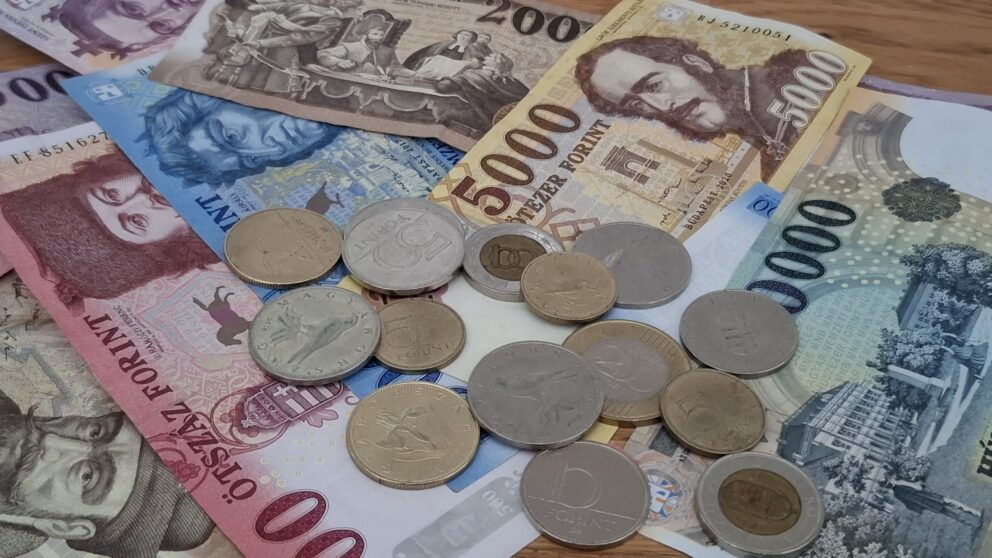
Currency of Hungary: the Hungarian forint (HUF) – Forint facts for travelers (2025 updates)
Planning a trip to Budapest? Here’s what you need to know about using the Hungarian currency, the forint (HUF)
If you’re planning a trip to Budapest, one of the first practical questions you’ll probably ask is: “What currency do they use in Hungary?” The short answer is – official currency of Hungary is the Hungarian forint, or HUF for short. And while it might sound a little unfamiliar at first, don’t worry – you’ll get the hang of it quickly.
Let me walk you through everything you need to know about using money in Budapest. From where to get forints to how much you’ll need, this guide will help you feel prepared and confident as you explore the city.
Payment methods in Budapest
In Budapest and all over Hungary, the official currency is the Hungarian forint (HUF). Although some places may accept euros, we recommend being cautious, as unfavorable exchange rates could mean you pay more than you’d like. An item’s price could be listed like this (using Forint, Ft or HUF):
- 100 Forint
- 100 Ft
- 100 Huf
Exchange rate – Three golden rules of the Hungarian forint
- If possible, exchange small denominations so you always have smaller bills handy.
- Aim to use smaller denominations for cash transactions.
- Always check the official exchange rate, such as on the xe.com website, to avoid high exchange fees. If the rate you’re offered differs significantly, be wary!
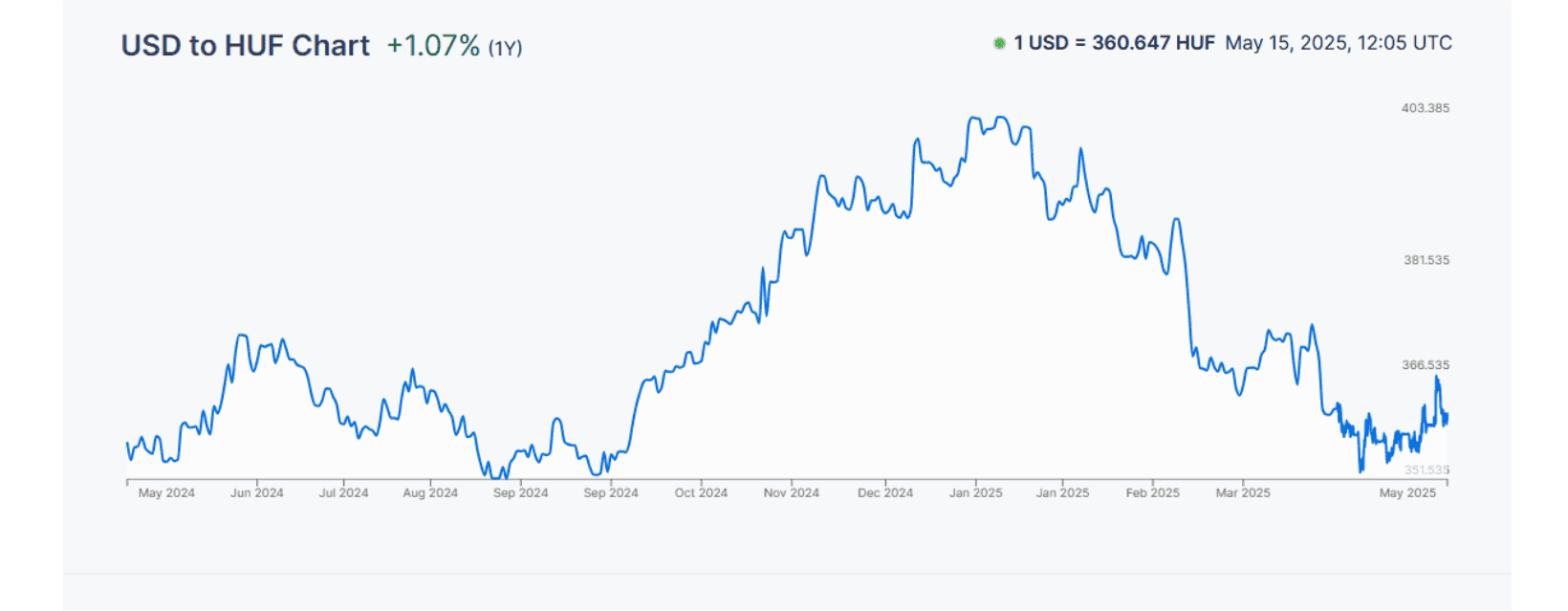
Where shoud I get Hungarian forints?
Many arrive in Budapest having already exchanged for Hungarian forint. While it seems safe, exchanging money outside Hungary can be more expensive; it’s advised to only exchange a small amount.
At the airport and train stations: While convenient, the rates here are usually not favorable. Only exchange small amounts.
In banks: This is the safest option, though not always offering the best rates.
Another good option is withdrawing forint banknotes from an ATM. Look for reputable banks like OTP, Erste, Raiffeisen, CIB or K&H. Just be careful when the machine offers to do the conversion for you – it’s often better to decline and let your home bank handle it.
Hungarian currency exchange offices: Typically offer the best rates. Keep your receipt for any potential claims. Before exchanging money, compare rates at two or three places. First, check the exchange rate offered, then any transaction fees, as high handling costs can have an affect on a good rate.

Do I need to carry cash?
Bank cards are widely accepted across Hungary, making it unnecessary to carry large amounts of cash. It’s convenient and safe for transactions, but it’s always good to have some cash for smaller expenses, tips, or in places that only accept cash. If you wish to tip for a service, it’s usually done in cash. No one will be offended if you tip in euros or dollars. It is not common, but in some shops EUR is also accepted in Hungary.

Exchange Hungarian forints to US dollar / Euro / GBP
You can easily calculate currency exchange rates using the online currency converter website xe.com.
How much is 1 USD or 100 USD worth in Budapest?
One USD is approximately worth 360 Hungarian forints. With this, you can buy a 1.5-liter bottle of mineral water and still have about 150 HUF left.
One hundred US dollars are about 36,000 Hungarian forints (HUF), which is considered a significant amount of money in Budapest. With this amount, a family of four can easily have lunch in a restaurant.
In Hungary, all retail prices already include taxes (like VAT), so the price you see on the shelf is exactly what you pay at the register.
How much is 1 EUR or 100 EUR in Budapest?
One Euro is approximately worth 400-405 Hungarian forints (HUF), with which you can buy two 1.5-liter bottles of mineral water.
HUF to GBP – how much is 1 GBP in Budapest?
One British pound is approximately worth 480 Hungarian forints (HUF), which is enough to buy a loaf of fresh bread and still have change for a small bottle of soda.

How much money should I bring to Budapest?
The cost of visiting Budapest can greatly depend on a tourist’s habits. This depends a lot on your travel style. Are you dining in Michelin-star restaurants or grabbing goulash from a food truck?
If your accommodation is already paid for, you can easily get by on 40–80 euros per day – that’s about 16,000 to 32,000 forints. This budget covers public transportation, meals, coffee breaks, and even a few spontaneous treats (hello, thermal baths!).
Simplified conversion rates for common expenses (Hungarian forint exchange rate)
- A public transport ticket costs 450 HUF (approx. 1.1 EUR / 1.2 USD / 0.9 GBP).
- A monthly pass costs 9,000 HUF (approx. 22.6 EUR / 23.4 USD / 18.6 GBP).
- One hour of parking costs 550 HUF (approx. 1.4 EUR / 1.5 USD / 1.1 GBP).
- Taxi base fare is 1,100 HUF (approx. 2.8 EUR / 2.9 USD / 2.3 GBP), plus 440 HUF per kilometer and waiting fee of 110 HUF per minute.
Food and drink prices in Budapest – Hungarian forint stats
- 1.5 liters of mineral water: 150–200 HUF (approx. 0.4–0.55 EUR / 0.4–0.5 USD / 0.3–0.4 GBP)
- A meal for two in a fast-food restaurant: around 5,000 HUF (approx. 12.6 EUR / 13 USD / 10.3 GBP)
- A pizza (32cm): 3,500 HUF (approx. 8.9 EUR / 9 USD / 7.2 GBP)
- A beer (0.5 liter) in a pub: 1200 HUF (approx. 3 EUR / 3.1 USD / 2.5 GBP)
Canned beer in a shop: 300 HUF (approx. 0.8 EUR / 0.8 USD / 0.6 GBP) - A bottle of wine: 1,500–20,000 HUF (approx. 3.8–50.2 EUR / 3.9–52 USD / 3.1–41.3 GBP)
- A gyros: 1,500 HUF (approx. 3.8 EUR / 3.9 USD / 3.1 GBP)
Prices are still quite reasonable compared to other countries of the European Union, which is one of the reasons Budapest is so popular among travelers.
Tipping in Hungary – What’s the etiquette?
Tipping in Budapest is a personal gesture that expresses satisfaction with the service. Generally, it’s customary to leave a 10% tip, but it’s not obligatory. If you were pleased with the service and wish to show appreciation, a 10% tip is a perfect way to do so. However, if the service didn’t meet your expectations, it’s perfectly fine not to leave a tip.
It’s worth noting that more and more restaurants in Budapest now add a service charge (usually 10–15%) directly to the bill — this is the local equivalent of a tip. This charge is usually clearly stated on the menu, but if you’re unsure, don’t hesitate to ask before paying.
Try to avoid giving coins as tips when possible, as it’s considered less elegant. Having smaller denomination bills — whether in forints, euros, or dollars — can help avoid awkward situations.
Where is tipping most common?
- Restaurants are the top places where the beforementioned guidelines apply.
- In the nightlife scene, such as bars and pubs, it’s common to tip more generously, especially when paying with cash. Tipping with a card is less common.
- When paying in cash, aim to round up the total to a neat sum within reasonable limits, respecting the 10% guideline. For example, for a drink costing 1,720 HUF, you could give 2,000 HUF and indicate you don’t need change, or specify the change you’d like back if paying with a larger bill.
While bank card payments are widely accepted in Budapest, and many prefer this method, there are situations where having cash is practical. Some smaller shops, markets, or certain points in public transportation may require cash. Tips are usually given in cash, especially for personal services. Always carry some cash, preferably in smaller denominations, to easily pay or tip.
Useful tips & tricks
- Always have some forint in your wallet because you never know when you might need it.
- The biggest forint note is 20,000 HUF (~50 euros), should you use an ATM to have your HUF, be careful when you break it.
- smaller or less busy shops are very unhappy about taking a 20,000 huf banknote, have some change and smaller notes ready as well.
- when you change money in money exchange shops, ask for smaller banknotes too.
- The smallest Hungarian coin in circulation is the 5 forint coin.
- Should you receive a banknote that is not valid anymore, go to the nearest bank, where they will replace it for you.
- Never take a torn or missing banknote, because they will not be accepted and they are not valid. If you receive one, take them to the nearest bank, where they will be replaced.
- If you have a car and you will be parking in Budapest, you will need coins to feed the parking meter. If you are staying in the city center, it is more likely that you will have to pay a parking fee.
- Vending machines accept only coins too.
- Use online currency converters like xe.com
If you would like to read about tipping in details read our article here.
History of the money in Hungary in a nutshell
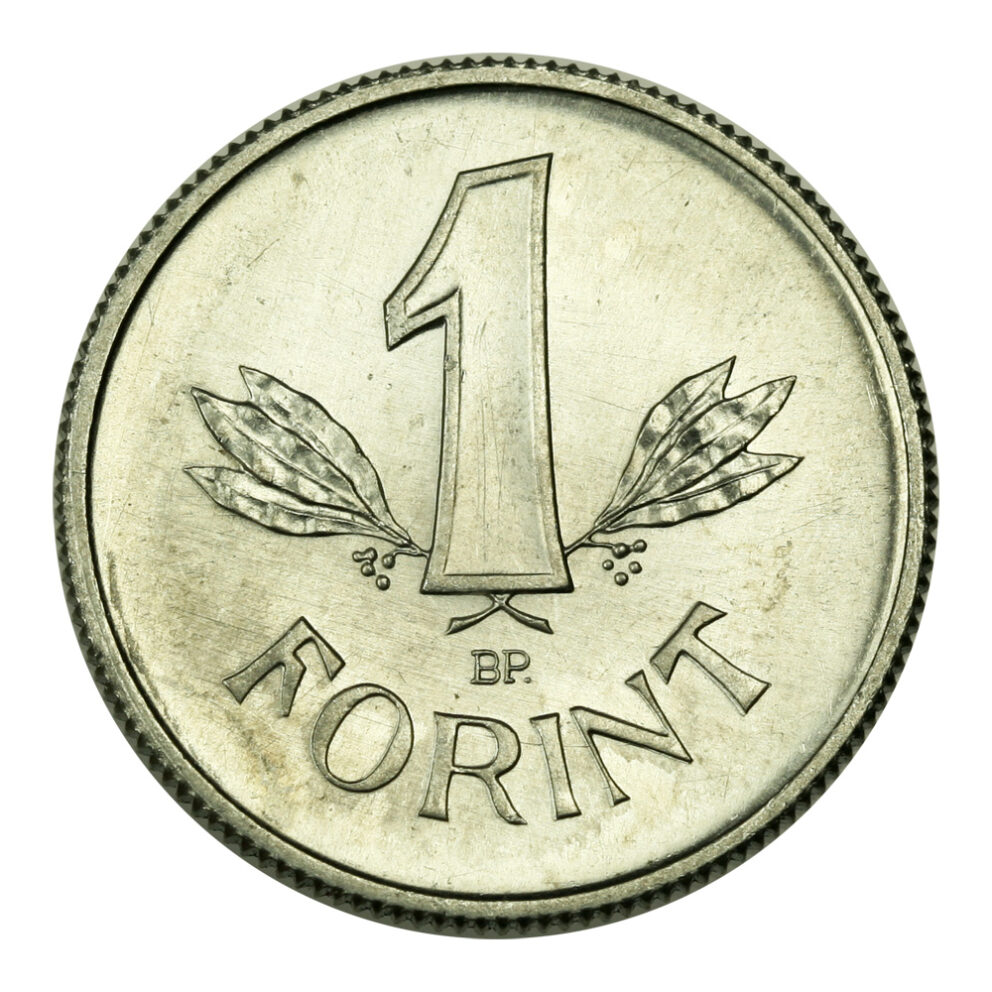
The first forint was introduced after World War II, in 1946, as a gold-based currency. The name of Hungary’s currency, the “forint,” originates from the city of Florence, where gold coins called fiorino d’oro were minted starting in 1252. At the time of its introduction, the value of 1 forint was defined as 0.0757575 grams of gold.
Since then, the value, use, and design of the forint have changed significantly, reflecting shifts in the Hungarian economy. The Hungarian National Bank (Magyar Nemzeti Bank), in cooperation with the Hungarian government, oversees the issuance and stability of the currency.
Although Hungary is a member of the European Union, the euro has not yet been adopted, and the forint remains the official currency.
Forint coins: take forint home as a souvenir
There are some unique coins, like the “50 forint coin series”, that has got different designs on the backside. If you check your change in your purse, you might find a special one that commemorates an important sports event, a historical event or just something that matters in Hungary. A new design is being minted every year. 2 million pieces of each are being produced. If you are vigilant enough you might find one, and if you do so, hold on to it and put it in your wallet as a lucky coin.
What designs you can find:
For example:
- 2019 FIE World Fencing Championship,
- 2018 The Wrestling World Championship,
- 2017 Year Of Families and so on.
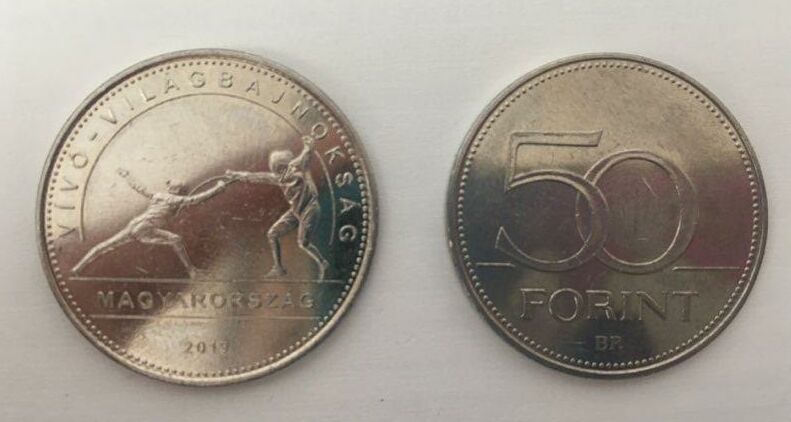
Make your own souvenir
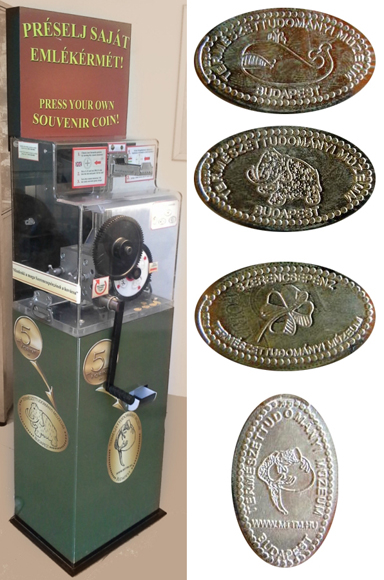
There are some typical “Hungarian money pressing machines” at popular sights in Budapest where you can have a selected picture pressed on your coin. You just need to insert your coin, turn the wheel and off you go. You will have a flattened and re-printed 20 or 50 forint coin as a nice memory about Budapest.
Wrapping up
So, to answer the big question: What’s the currency in Budapest? It’s the Hungarian forint, and yes – you’ll need some of it while you’re here. Whether you’re enjoying a coffee by the Danube or buying paprika at the amazing Central Market Hall, or using the public transport having a bit of local currency makes life easier – and your experience more authentic.
FAQ
What is the Hungarian currency and how does it work?
The official currency of Hungary is the Hungarian forint (HUF). It has been around since 1946, replacing the previous currency due to hyperinflation. The forint has banknotes and coins, with various denominations like 5 forint coins, 100 forint, and 200 forint notes. If you plan a business in Hungary, it’s essential to understand how the Hungarian economy interacts with this currency.
How is the HUF exchange rate determined?
The exchange rate of the Hungarian forint is influenced by several factors including market demand, inflation rates, and the Hungarian government policies. The Hungarian National Bank plays a significant role in managing the currency. If you’re curious about the current rate, you can easily check it on a currency converter or financial news websites.
Are there different forint banknotes and coins?
Absolutely! The forint comes in various banknotes and coins. The banknotes include denominations like 500, 1,000, 2,000, 5,000, 10,000, and 20,000 forints. As for coins, you’ll find 5 forints, 10 forints, 20 forints, 50 forints, 100 forint, and 200 forint coins. Each one has its own unique design that reflects the nature, rich culture and history of Hungary.
What’s the current HUF to euro / HUF to dollar / HUF to pound exchange rate?
The HUF to euro exchange rate fluctuates frequently, so it’s best to check a reliable currency converter like XE.com for the most up-to-date rates.
As of May 16, 2025, the exchange rates are approximately:
- 1 EUR = 403.38 HUF
- 1 USD = 359.12 HUF
- 1 GBP = 478.23 HUF
These rates can vary, so it’s advisable to check the current rates before making any currency exchanges.
Happy travels, and enjoy every forint you spend in Budapest!
More interesting and useful tips
Parking Budapest – check out our article on this topic to avoid fines and find the best parking spots, even for free.





